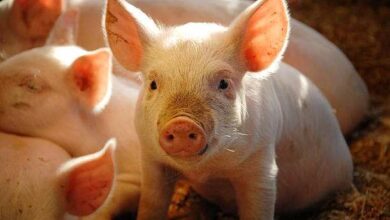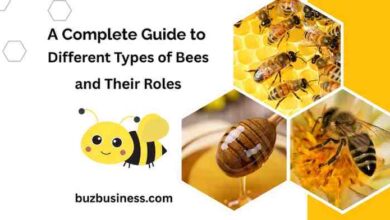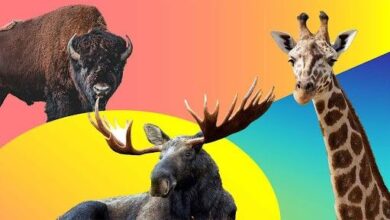The Beautiful Blue World of Blue Birds: Nature Winged Jewels
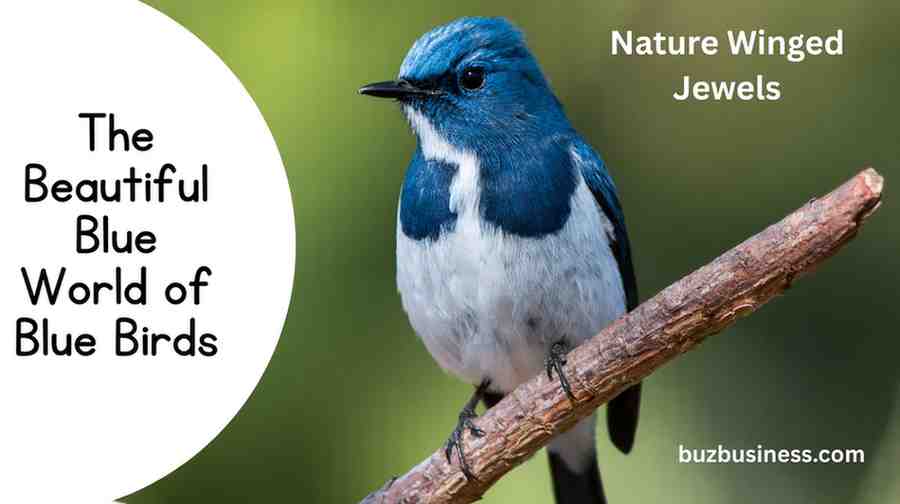
Have you ever been brought up sharp by a glimpse of impossible blue as it shot through the trees? That spark of color that leaps out on green foliage or grey sky is not only pretty, but it is also a kind of miracle of nature.
Blue birds exert a specific draw on us in their splendour of the rainbow of colours between cobalt and cerulean. But what lies hidden under those bright feathers? Why do they grab the attention of cultures from Jakarta to Jaipur to Jacksonville? And how can we make sure these living gems keep gracing our skies?
This article explores this fascinating topic of blue birds, science relating to them, the number of species in the world, their significance, conservation, and bird watcher tips. You can find these bird treasures in Indonesia, India, and the United States, to mention just a few.
1. Why Blue Birds Are Not Blue
At first glance, the color of a blue bird’s feathers seems obvious. But scientifically speaking, these birds are not truly blue in the sense of pigment. While red or yellow birds produce their colors through the presence of light-scattering pigments that reflect red or yellow light, the “blue” in bluebirds is a structural effect. The bird’s feathers scatter light so that only blue wavelengths of light are reflected into our eyes.
Feathers have microstructures that cause individual flashes of light. In bluebirds, air spaces in their barbs scatter the light in what is called the Tyndall effect. And that is why the sky appears blue, too. The scattering of other wavelengths of light makes the blue light reflect. So when you see another blue bird in the sunshine, you admire a lovely physio-biology piece.
Then again, what is more astonishing is that when you dry blue bird feathers after powdering them, the powder will be brown or grey, as that is their actual color. Pigments do not produce the coloration in them, but the microstructure of their feathers does. This phenomenon indicates a whole new dimension of appreciation for these birds and does much to illustrate the beauty of adaptive evolution.
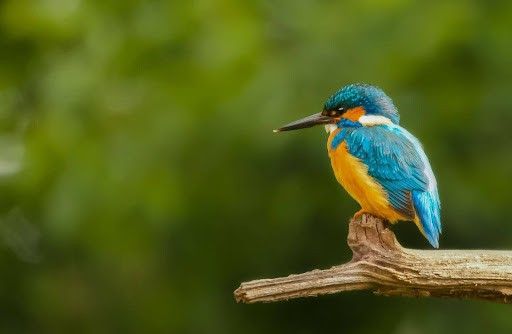
2. Types of Blue Birds Found Throughout the World
Blue birds vary in number, each with its unique characteristics and way of acting. Indonesia, India, and the United States are home to some of the most marvelous bird species in the world.
Indonesia, India, and the United States are just some of the places where some of the greatest bird species in the world are found.
It is the most renowned blue bird in North America. The Eastern bluebirds are thrushes, relatively small in size, having blue backs and reddish-brown chests. The trees also occur in open woods, open fields, and orchards. The Eastern Bluebirds also make small chirping sounds; their major food is insects.
After facing an area once threatened by habitat loss and competition from exotics, the Eastern Bluebird rebounded due to the availability of nest boxes and rising public awareness.
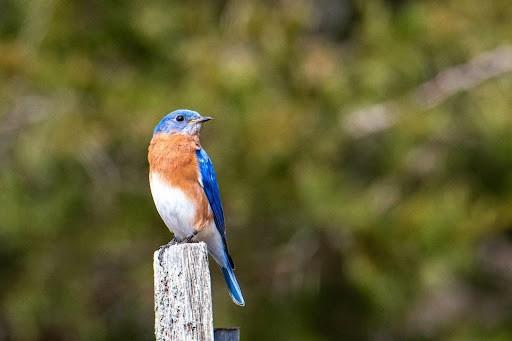
Verditer Flycatcher ( Eumyias thalassinus ) – India and Southeast Asia
The Verditer Flycatcher is a diminutive passerine bird well-known for its turquoise-blue plumage. The bird appears in the Western Ghats and the Himalayas and is a birdwatcher’s delight. It differs from the other flycatchers in that it prefers the open perch, making it prominently viewable.
It derives its name “verditer” from its bluish-green color, as though it radiates it. It is a bird that eats insects and is most commonly seen alone or in pairs, with its swift flight seeking out insects in the air.
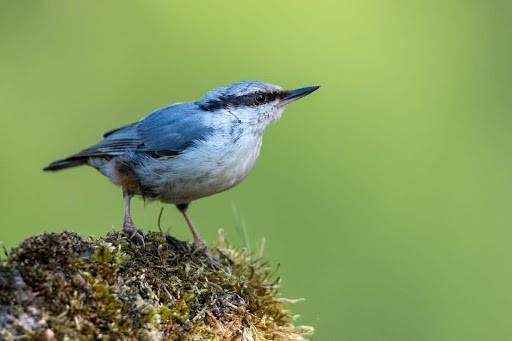
India Blue Whistling Thrush Myophonus caeruleus
It is a sizeable bird and is highly visible both visually and audibly. Its feathers are deep blue, usually streaked with white, and it has noisy, musical whistles. They live in hill forests and in places that are near water.
Highly versatile, the Blue Whistling Thrush is observed to forage near human settlements. Its musical voice and high intelligence have made it a favorite among bird lovers.
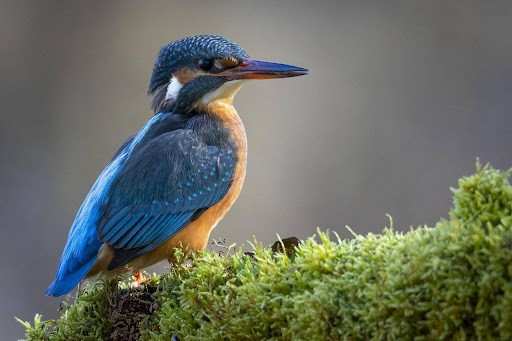
The Javan Kingfisher (Halcyon cyano)
Javan Kingfisher lives in Java and Bali. This cry out Bird has a bright blue back and wings and a belly that is orange in color. It does not live in rivers like the kingfishers but you can find in rice fields, plantations even near the suburban house unlike river kingfishers.
It is a carnivorous animal and preys on small reptiles, frogs and insects, and It also has a localized locality and faces habitat loss, which requires its conservation in Indonesia.
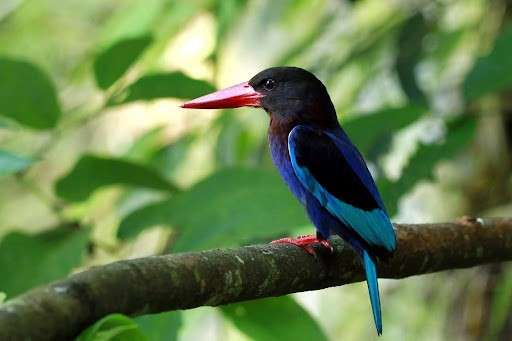
Indigo Bunting (Passerina cyanea) – United States
It is called the blue canary and is identifiable in the breeding season due to its blue feathers, as noticed in the male. It is a bird migrating between North and Central America and occurs in farmlands and woodlands.
They are, in nature, insectivorous and feed on the seeds, which are known by their sweet, tuneful song that is attuned to the summer.
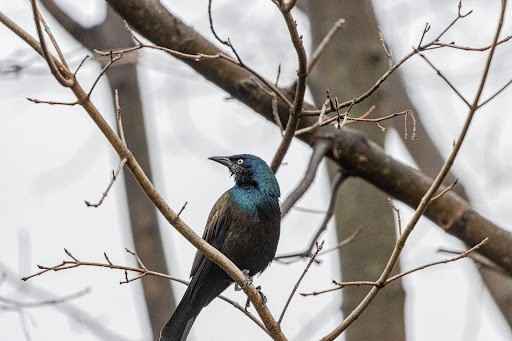
3. Cultural & Spiritual Significance of Blue Birds
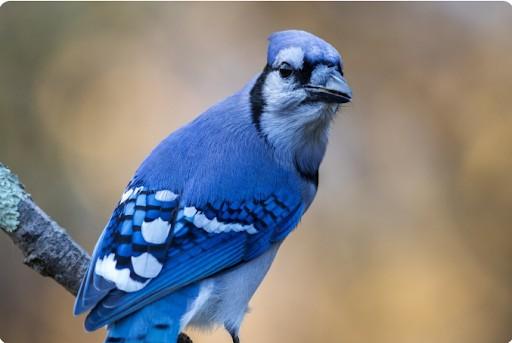
Blue birds possess cultural and religious significance all around the globe. According to ancient mythology and contemporary sayings, they were also worshiped as symbols of joy, harmony, and hope.
Indonesia
Birds can demonstrate freedom and a spiritual message in Indonesian, Javanese, and Balinese communities. A blue bird, or, e.g., a Javan Kingfisher, is said occasionally to be a sign of good luck or a sign that the ancestors are abroad.
Blue birds also belong to folklore and mythology; this vivid and gorgeous color symbolizes heavenly harmony, clearness, and calmness.
India
In Hindu stories, birds hold an intermediate place. One is the Peacock, India’s national bird, associated with Krishna and Saraswati. In contrast, the Verditer Flycatcher, or blue birds, brings thoughts of inner peace and spirituality. Hindus consider blue to be the closest associate of the divine. Such deities as Krishna and Shiva are often represented in blue, the infinite blue of the sky and its oceans.
United States
The blue birds of happiness frequently finds its way through American writings and culture. It was first used by people at the beginning of the 1900s, and you can find it today in poems, songs, and everybody’s sayings. Bluebird was also taken as a winter-to-spring sign by the Native American communities, who believed things were about to get fresh.
Spiritually, the sight of a blue bird is believed to signify the identification of joy and elation, and that is why it reminds the viewer to enjoy the moment at hand. People also use it to discuss an attempt to achieve happiness and peace.
4. Blue Birds and Conservation: What’s at Stake?
Among the most beautiful birds, blue birds are not an exception insofar as biodiversity issues around the world are concerned. Specific bluebird species are becoming extinct because of anthropogenic activity.
Habitat Loss
Farming growth, cutting forests, and expanding cities have wiped out much of nature’s homes. Birds such as the Eastern Blue bird and Javan Kingfisher face tough times as they need small, specific habitats to live and reproduce.
Removing dead trees, which form natural cavities for nesting, has been difficult for some species to breed successfully.
Invasive Species and Predators
Blue bird chicks and eggs are preyed on by alien predators such as cats, rats, and snakes. In the United States, European Starlings and House Sparrows, which people brought in, further provided additional competition for nest sites.
Pollution and Pesticides
Blanket pesticide use has been particularly disastrous for insects, which constitute the primary food source for most blue birds. Birds also carry a concentration of pesticides to their systems, rendering them ill or reproductively challenged.
Climate change
The fluctuation of weather and temperature is playing havoc with the movement of the birds and even the breeding time. Such birds as the Indigo Bunting or Verditer Flycatcher may get the timing of the appearance of insects wrong, or they may have to fly further than usual to reach their destination.
5. Which blue birds are the most iconic in the United States?
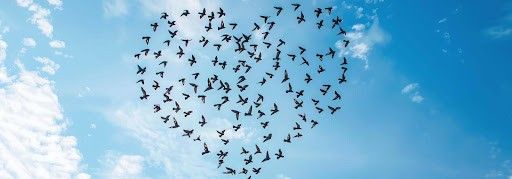
Blue birds evoke specific, nostalgic visions in Americans’ minds. The Eastern Blue bird (Sialia sialis), with its rusty, benignant breast and its sky-blue back, is so fair, perhaps most symbolic of all, a pledge to so many of joy and hope. Having come close to extinction through habitat loss and competition with introduced species such as the House Sparrow and the European Starling, with active conservation efforts in the form of nest box schemes, it has become a true success story. Through fields and woods once more its rollicking call comes again.
The Western Blue birds (Sialia mexicana) and the Mountain Blue birds (Sialia currucoides) inhabit the mountain meadows and the open areas of the West. As striking against snowy backgrounds or open skies as is possible for a bird is the Mountain Bluebird, almost entirely brilliant, pale blue.
No compendium of American blue birds would be thorough without the powerful, clever Blue Jay (Cyanocitta cristata). Its bright blue, white, and black coloration, crest, and booming, broad range of calls make it anything but subtle.
6. Can You Spot Gorgeous Blue Birds in India’s Diversified Landscapes?
Indeed! India is stunningly rich in biodiversity, containing many birds with blue feathers. Probably, one of the most famous and culturally symbolic is Indian Roller (Coracias benghalensis). It is a well-known telegraph wire (or tree) over open country birds, and its spectacular flying circumstance combined with its flashy turquoise and electric-blue wings make it memorable. It is an Indian state bird and a state bird of several Indian states (Karnataka, Odisha, Telangana, and Andhra Pradesh), and such a bird has cultural significance and is sometimes considered an indicator of good luck.
Kingfishers are attractive. White-throat Kingfisher (Halcyon smyrnensis) is a frequent visitor to an area around a watercourse or an urban scene with a deep chestnut beneath and a brilliant turquoise-blue back, wing, and tail. It is the cousin of the flashy cobalt blue Common Kingfisher (Alcedo atthis) on rivers and streams.
Bee-eaters provide their striking colors. One of the most common summer birds is the Sleek Bee-eater (Merops philippinus) of green and blue. This is the sole beef-eater found in East Asia. Among the most attractive visitors is the blue-cheeked bee-eater ( Meropspersicus).
Moving farther into the woods, it is possible to spot its little gem of a bird, donned in all pale blue-turquoise color. Yet again another woodland bird that roams in shining blue feathers is any blue-colored blue flycatcher, Tickell (Cyornis tickelliae).
7. Does Indonesia Have Several of the World’s Most Beautiful Blue Birds?
It is a biodiversity hotspot with thousands of islands, and Indonesia is the heaven of birders and a place where some of the greatest blue birds in the world are found. New Guinea Island (with Papua New Guinea) owes its mysticism to the mythical grandeur of the Birds-of-Paradise. Lawes parotid (parotid laws), a bird with a shiny blue-green breast shield, paradise ( Cicinnurus regius ) and its glistening blue feet and neck collar, and blue bird-of- Paradi- so ( paradisornis Rudolph ) also in glossy blue plumage, and the black velvet, blue feathers, the extreme of ornithological excess.
Indonesia is the best place to find kingfishers. The Kingfisher ( Todiramphus sanctus ) is a beautiful bird that decorates the seashores. Eye-catch when you look at endemics such as the Blue-and-white Kingfisher (Todiramphus diops) of Halmahera or the sheer wonder of the Lilac-cheeked Kingfisher (Cittura cyanotis) of Sulawesi.
Indonesia is full of colorful families and parrots. It provides such beautiful birds as the Eclectus Parrot (Eclectus roratus) with a bright, fascinating emerald-green male bird and a bright blue and red female. Blue-streaked Lory (Eos reticulata), a vividly colored parrot with a blue-striped face and body, occurs only in the Tanimbar Islands.
Blue coloration is provided by hornbills, too. The Knobbed Hornbill (Rhyticeros cassidix) of Sulawesi produces a blue color on the throat pouch, and Sulawesi Hornbill (Rhabdotorrhinus exarchates) has a yellow fac-cial patch as well as a pale blue patch. Flycatcher birds are sources of blue coloration, including the endemic Matinan Flycatcher (Eumyias sanfordi) in Sulawesi. Indonesia’s bird blues are full of endemic treasures.
8. How Can We Be Guardians of the Blue?
It’s our responsibility together to protect these bird wonders. This is what you can do wherever you live:
- Bird-proof your Garden: follow the habitat suggestions above in your Garden or other community areas. Natural plants provide clean water and keep pesticides out.
- Support Responsible Birding & Tourism: Select eco-tourism operators who take ethical positions on conservation and low impact, particularly in sensitive regions such as Papua. Wild birds and products or feathers of wild birds should not be bought.
- Join the Habitat Defenders: Urge local and global conservation groups (including BirdLife International partners, e.g., Burung Indonesia, BNHS India and Audubon Society in the US) to purchase land and to lobby the authorities to protect the important habitats.
- Minimize Collisions: Decorate your windows and use screens and decals and promote the development of bird-safe buildings in your community.
- Indoors: Keep cats indoors. It is one of the most essential things that can be used to avoid billions of birds annually.
- Be a Citizen Scientist: Get involved with a bird census (e.g., eBird, Great Backyard Bird Count) and other Biden-related contributions to significant bird data on population and trends.
Why Blue Birds are Important
The blue birds are not only a visual marvel. They are natural pollinators, pest control agents, and cultural signs. Although they are occasionally denounced as feeder bullies, blue jays are critical ecological phenomena, such as the dispersion of acorns (which helps to maintain oak forest regrowth) and a warning to other animals of predators.
And we can learn about science, spirit, and the lovely balance of nature because each blue bird is a story.
FAQ:
Q1. Which bird is blue in colour?
The Indian Roller is a brightly hued blue bird seen in various parts of India. Famed for flashing its bright blue wings and aerial acrobatics, the bird is also a state bird in several Indian states.
Q2. What is a blue bird’s name?
The Indian Roller, an elegant blue bird. Other well-loved blue birds are the blue jay, kingfisher, and blue rock thrush, all renowned for their vibrant color.
In many cultures, a bluebird is considered a symbol of renewal, hope, and happiness. Seen as a harbinger of happiness, bluebirds signal the presence of good things, new opportunities, and new beginnings in life, in nature, and on a spiritual level.
Birds can be blue, such as the Indian Roller, Blue Jay, Kingfisher, and Eastern Bluebird. In fact, these birds are blue because the structure of the feathers reflects light, not because of blue pigments—and this is what gives them their intense blue hue in the sunlight.
It’s the Eastern Bluebird, which is closely associated with North America. It is known for its bright blue feathers and reddish chest and represents happiness—you can typically find these birds in open fields, woodlands, and gardens.

